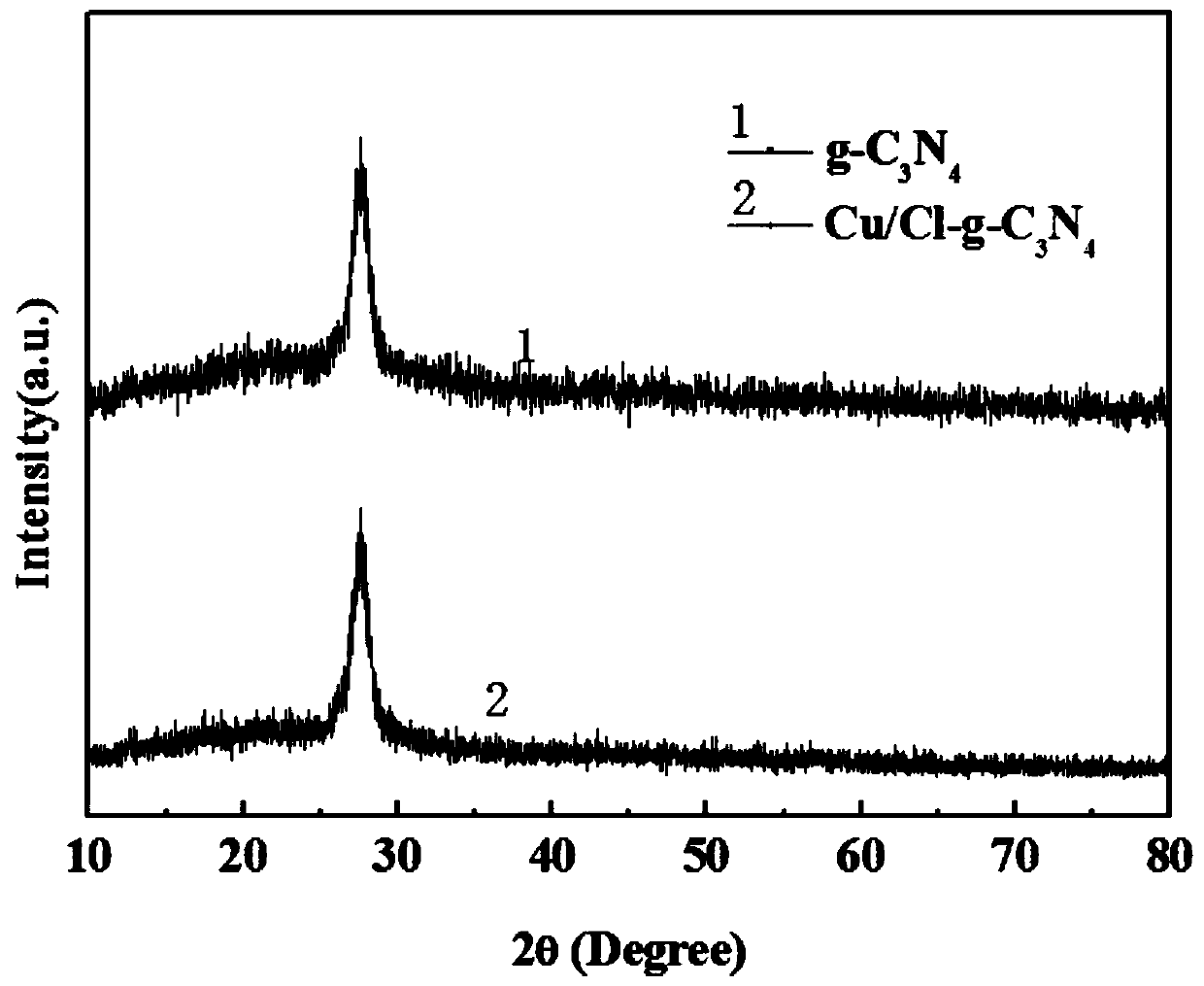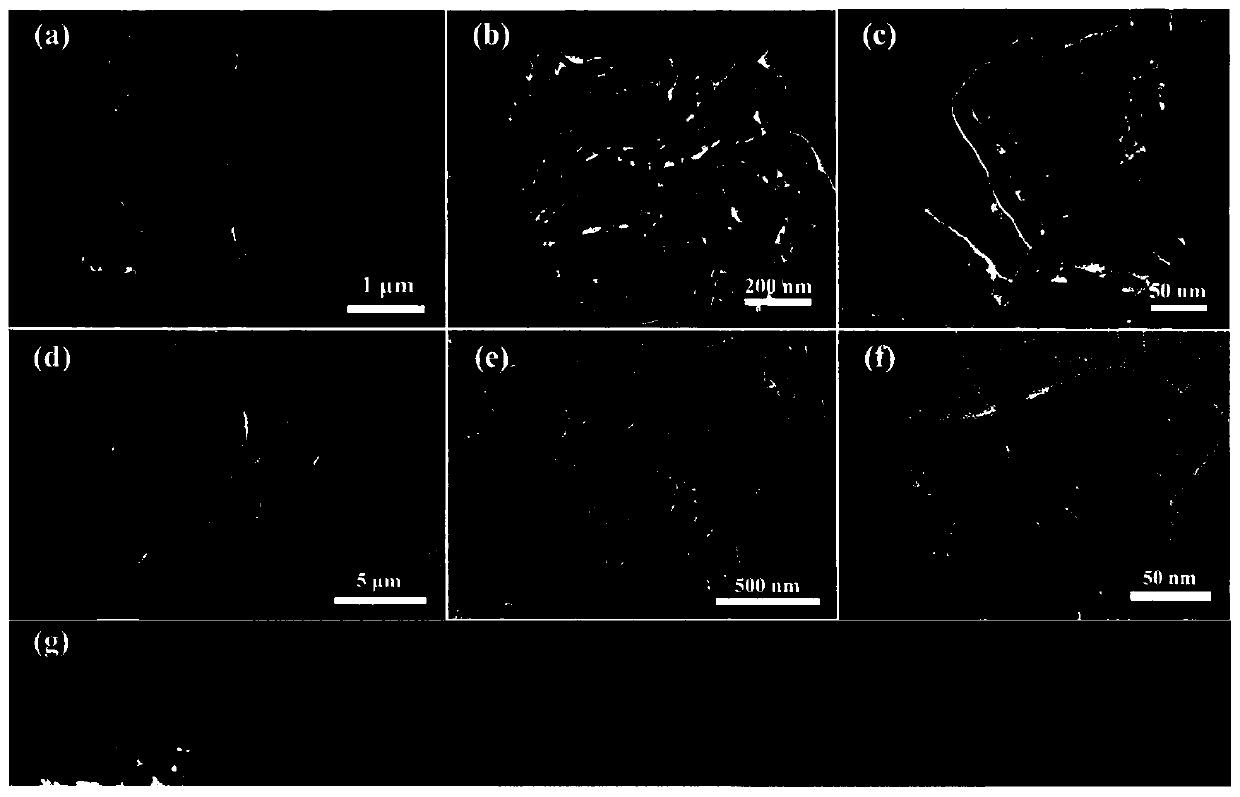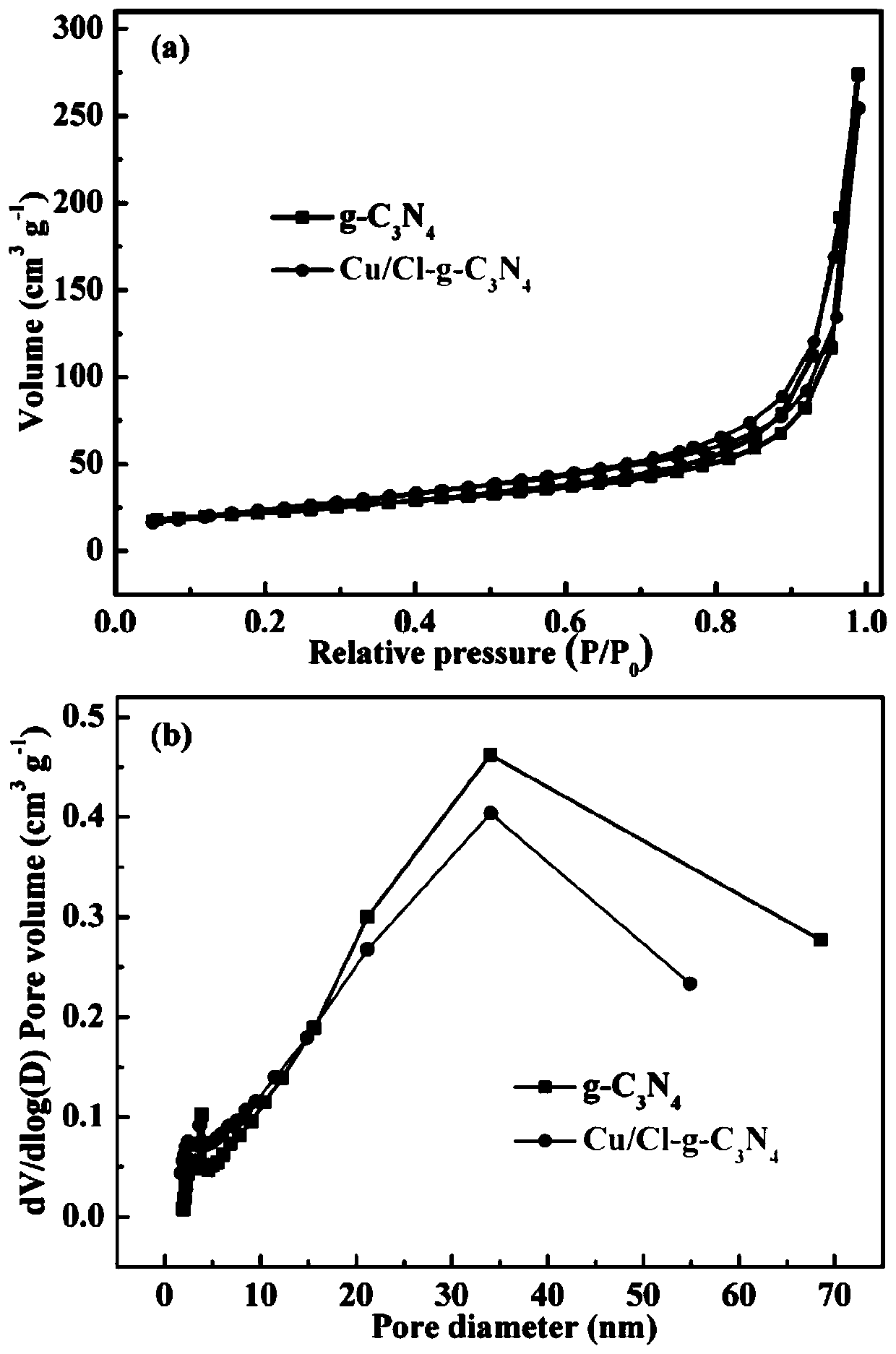A kind of mesoporous photocatalyst and its preparation method and application
A photocatalyst and mesoporous technology, applied in chemical instruments and methods, physical/chemical process catalysts, chemical/physical processes, etc., can solve undiscovered problems, achieve short reaction time, reduce costs, and facilitate mass production.
- Summary
- Abstract
- Description
- Claims
- Application Information
AI Technical Summary
Problems solved by technology
Method used
Image
Examples
Embodiment 1
[0031] Example 1: 0.77wt% double doped Cu / Cl-g-C 3 N 4 Preparation of Mesoporous Photocatalysts
[0032] 1. Preparation of mesoporous g-C 3 N 4 catalyst of light
[0033] 1. Weigh urea, dry it in an oven at 80°C for 24 hours, grind it and put it into a crucible, cover it, and place it in a muffle furnace at 2°C min -1 The heating rate is from room temperature to 550°C, and calcined for 4h.
[0034] 2. Use 1mol L after taking it out -1 Soak and stir in nitric acid for 24 hours, filter, then wash with distilled water 7-8 times until neutral, and dry in an oven at 80°C for 24 hours.
[0035] 3. Take out the sample and grind it, place it in a crucible, and calcinate it in a muffle furnace at 500°C for 4 hours without a cover to obtain thermally exfoliated g-C 3 N 4 catalyst of light.
[0036] 2. Preparation of 0.77wt% double-doped Cu / Cl-g-C 3 N 4 mesoporous photocatalyst
[0037] 1. Accurately weigh 0.0023g cuprous chloride, dissolve it in 5mL ammonia water, and ultras...
Embodiment 2
[0043] Embodiment 2: 1.53wt% double doping Cu / Cl-g-C 3 N 4 Preparation of Mesoporous Photocatalysts
[0044] 1. Preparation of mesoporous g-C 3 N 4 catalyst of light
[0045] 1. Weigh a certain amount of urea, dry it in an oven at 80°C for 24 hours, grind it and put it into a crucible, cover it, and place it in a muffle furnace at 2°C min -1 The heating rate was heated from room temperature to 550°C, and calcined for 4h.
[0046] 2. Use 1mol L after taking it out -1 Soak in nitric acid and stir for 24 hours, then filter, then wash with distilled water 7-8 times until neutral, and dry in an oven at 80°C for 24 hours.
[0047] 3. Take out the sample and grind it, place it in a crucible, and calcinate it in a muffle furnace at 500°C for 4 hours without a cover for thermal exfoliation to obtain mesoporous g-C 3 N 4 catalyst of light.
[0048] 2. Preparation of 1.53wt% double-doped Cu / Cl-g-C 3 N 4 mesoporous photocatalyst
[0049] 1. Accurately weigh 0.0046g of cuprous ...
Embodiment 3
[0055] Embodiment 3: 4.57wt% double doping Cu / Cl-g-C 3 N 4 mesoporous photocatalyst
[0056] 1. Preparation of mesoporous g-C 3 N 4 catalyst of light
[0057] 1. Weigh a certain amount of urea, dry it in an oven at 80°C for 24 hours, grind it and put it into a crucible, cover it, and place it in a muffle furnace at 2°C min -1 The heating rate was heated from room temperature to 550°C, and calcined for 4h.
[0058] 2. Use 1mol L after taking it out -1 Soak in nitric acid and stir for 24 hours, then filter, then wash with distilled water 7-8 times until neutral, and dry in an oven at 80°C for 24 hours.
[0059] 3. Take out the sample and grind it, place it in a crucible, and calcinate it in a muffle furnace at 500°C for 4 hours without a cover for thermal exfoliation to obtain mesoporous g-C 3 N 4 catalyst of light.
[0060] 2. Preparation of 4.57wt% double-doped Cu / Cl-g-C 3 N 4 mesoporous photocatalyst
[0061] 1. Accurately weigh 0.0137g of cuprous chloride, dissol...
PUM
| Property | Measurement | Unit |
|---|---|---|
| size | aaaaa | aaaaa |
Abstract
Description
Claims
Application Information
 Login to View More
Login to View More - R&D
- Intellectual Property
- Life Sciences
- Materials
- Tech Scout
- Unparalleled Data Quality
- Higher Quality Content
- 60% Fewer Hallucinations
Browse by: Latest US Patents, China's latest patents, Technical Efficacy Thesaurus, Application Domain, Technology Topic, Popular Technical Reports.
© 2025 PatSnap. All rights reserved.Legal|Privacy policy|Modern Slavery Act Transparency Statement|Sitemap|About US| Contact US: help@patsnap.com



